
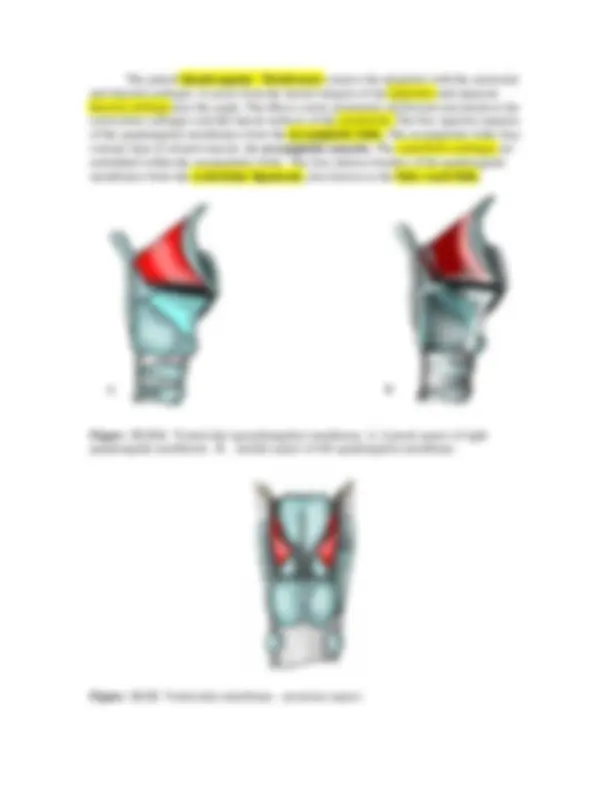
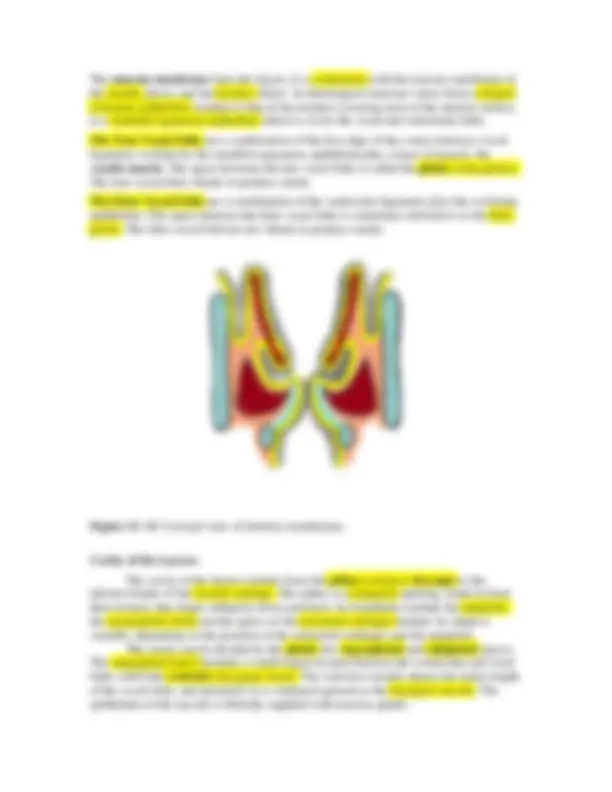
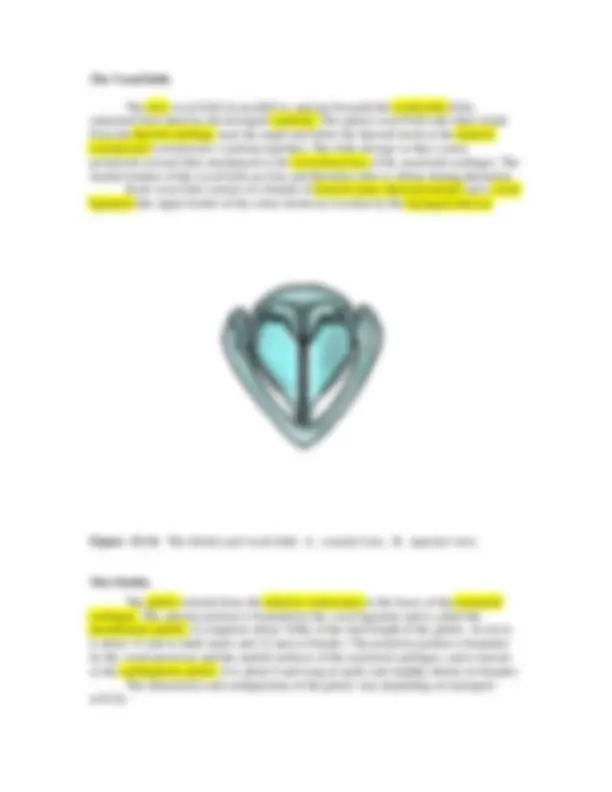
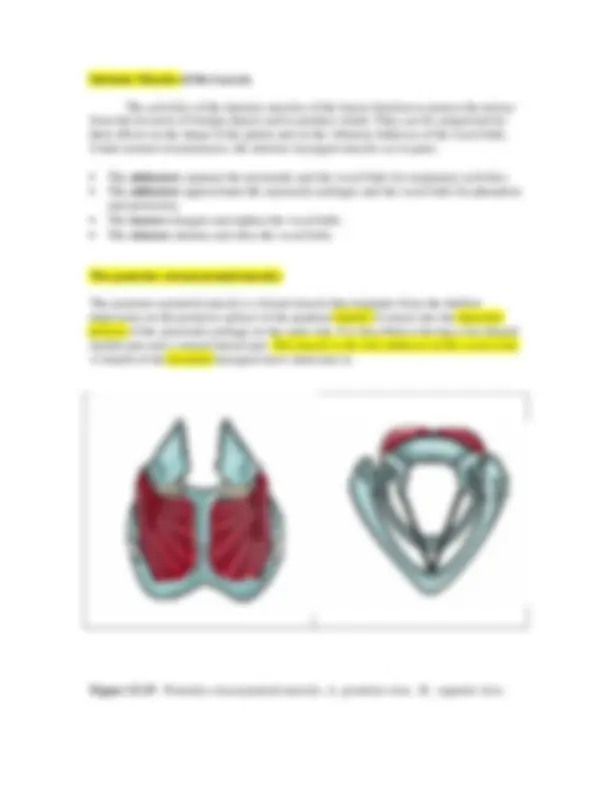
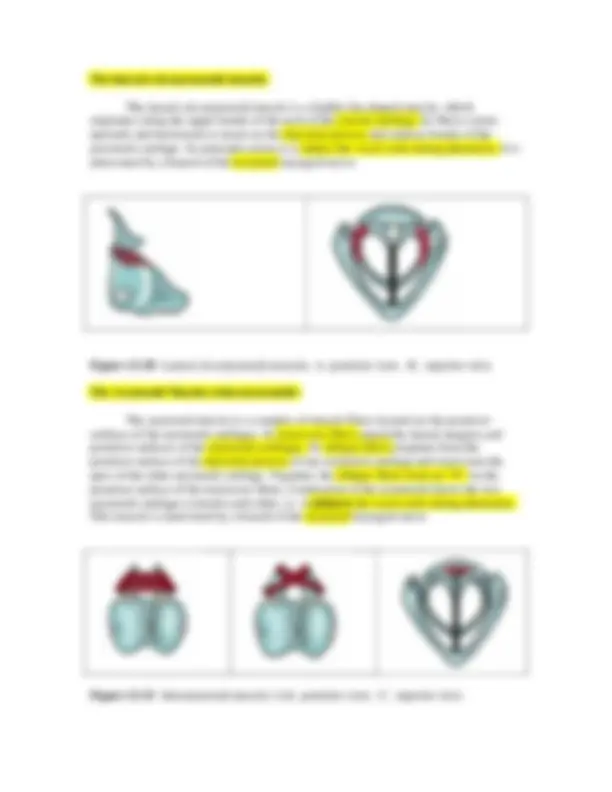
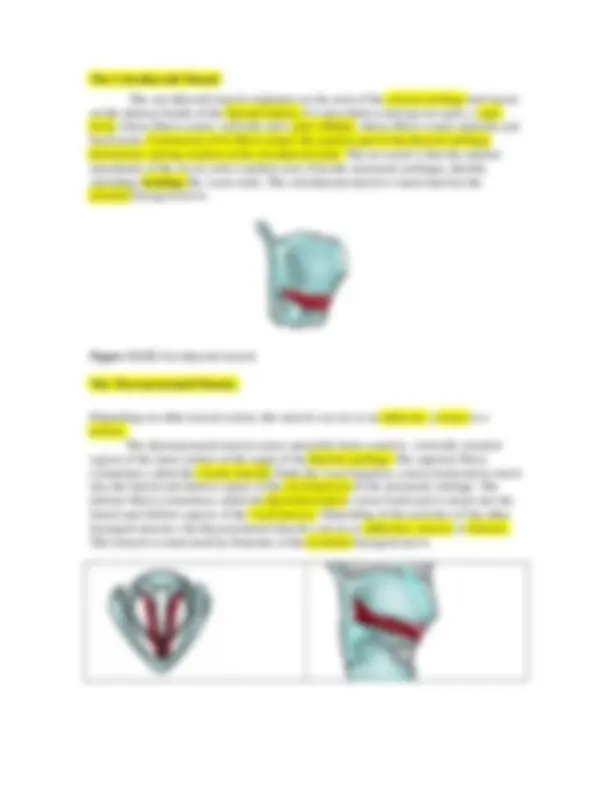


Study with the several resources on Docsity

Earn points by helping other students or get them with a premium plan


Prepare for your exams
Study with the several resources on Docsity

Earn points to download
Earn points by helping other students or get them with a premium plan
Community
Ask the community for help and clear up your study doubts
Discover the best universities in your country according to Docsity users
Free resources
Download our free guides on studying techniques, anxiety management strategies, and thesis advice from Docsity tutors
The paired Quadrangular Membranes connect the epiglottis with the arytenoid and thyroid cartilages. It arises from the lateral margins of the epiglottis and ...
Typology: Study notes
1 / 10

This page cannot be seen from the preview
Don't miss anything!







Membranes of the Larynx:
Extrinsic membranes connect the laryngeal apparatus with adjacent structures for support. The thyrohyoid membrane is an unpaired fibro-elastic sheet which connects the inferior surface of the hyoid bone with the superior border of the thyroid cartilage. The thyrohyoid membrane has an opening in its lateral aspect to admit the internal laryngeal nerve and artery
Figure 12-08 Thyrohyoid membrane.
The Cricotracheal membrane connects the most superior tracheal cartilage with the inferior border of the cricoid cartilage
Figure 07-09 Cricotracheal membrane/ligament.
Intrinsic Membranes connect the laryngeal cartilages with each other to regulate movement. There are two intrinsic membranes: the conus elasticus and the quadrate membranes.
The Conus Elasticus connects the cricoid cartilage with the thyroid and arytenoid cartilages. It is composed of dense fibroconnective tissue with abundant elastic fibers. It can be described as having two parts:
The medial cricothyroid ligament is a thickened anterior part of the membrane that connects the anterior apart of the arch of the cricoid cartilage with the inferior border of the thyroid membrane. The lateral cricothyroid membranes originate on the superior surface of the cricoid arch and rise superiorly and medially to insert on the vocal process of the arytenoid cartilages posteriorly, and to the interior median part of the thyroid cartilage anteriorly. Its free borders form the VOCAL LIGAMENTS.
Figure 12-10 Conus elasticus. A. Right lateral aspect. B. superior aspect
Lateral aspect of larynx – right thyroid lamina removed.
The mucous membrane lines the larynx. It is continuous with the mucous membrane of the mouth, above, and the trachea, below. Its histological structure varies from a ciliated columnar epithelium (similar to that of the trachea) covering most of the interior surface, to a stratified squamous epithelium where it covers the vocal and ventricular folds.
The True Vocal Folds are a combination of the free edge of the conus elasticus (vocal ligament, overlain by the stratified squamous epithelium plus a layer of muscle, the vocalis muscle. The space between the true vocal folds is called the glottis (rima glottis). The true vocal folds vibrate to produce sound.
The False Vocal Folds are a combination of the ventricular ligaments plus the overlying epithelium. The space between the false vocal folds is sometimes referred to as the false glottis. The false vocal folds do not vibrate to produce sound.
Figure 12 -13 Coronal view of intrinsic membranes.
Cavity of the Larynx.
The cavity of the larynx extends from the aditus (entrance) laryngis to the inferior border of the cricoid cartilage. The aditus is a triangular opening, wider in front than in back, that slopes obliquely down and back. Its boundaries include the epiglottis, the aryepiglottic folds and the apices of the arytenoid cartilages behind. Its shape is variable, depending on the position of the arytenoid cartilages and the epiglottis. The cavity can be divided by the glottis into supraglottal and subglottal spaces. The supraglottal space includes a small region located between the ventricular and vocal folds called the ventricle (laryngeal sinus). The ventricle extends almost the entire length of the vocal folds, and anteriorly it is continued upward as the laryngeal saccule. The epithelium of the saccule is liberally supplied with mucous glands.
The Vocal folds
The true vocal folds lie parallel to, and just beneath the ventricular folds, separated from them by the laryngeal ventricle. The paired vocal folds take their origin from the thyroid cartilage, near the angle and below the thyroid notch at the anterior commissure (commissure = joining together). The folds diverge as they course posteriorly toward their attachment to the vocal processes of the arytenoid cartilages. The medial borders of the vocal folds are free and therefore able to vibrate during phonation. Each vocal fold consists of a bundle of muscle tissue (thyroarytenoid) and a vocal ligament (the upper border of the conus elasticus) overlain by the laryngeal mucosa.
Figure 12-14 The Glottis and vocal folds A. coronal view, B. superior view.
The Glottis.
The glottis extends from the anterior commissure to the bases of the arytenoid cartilages. The anterior portion is bounded by the vocal ligament and is called the membranous glottis. It comprises about 3/5ths of the total length of the glottis. At rest it is about 15 mm in adult males and 12 mm in females. The posterior portion is bounded by the vocal processes and the medial surfaces of the arytenoid cartilages, and is known as the cartilaginous glottis. It is about 8 mm long in males and slightly shorter in females. The dimensions and configuration of the glottis vary depending on laryngeal activity.
Joints of the Larynx
The cricothyroid joint The cricothyroid joint is formed between the inferior horns of the thyroid cartilage and the posterior cricoid arch. It is (usually) a synovial joint (i.e. it is lined with a secretory membrane and filled with synovial fluid). The only movement possible is a rotational movement around a horizontal axis. Thickenings in the joint capsule are named the anterior, lateral and anterior ceratocricoid ligaments.
Figure 12-17. The cricothyroid joint.
The cricoarytenoid joint The cricoarytenoid joints are formed between the superior borders of the quadrate lamina of the cricoid cartilage and the arytenoid cartilages. They are synovial joints. The movement at the joint is described as a rocking-gliding motion. The net result of the complex movement is that the vocal processes of the arytenoid cartilages swing downward and inward, or upward and outward. A thickening in the posterior joint capsule, the posterior cricoarytenoid ligament limits the anterior movement of the arytenoid cartilages.
Figure 12-18. The cricoarytenoid joints.
Intrinsic Muscles of the Larynx
The activities of the intrinsic muscles of the larynx function to protect the airway from the invasion of foreign objects and to produce sound. They can be categorized by their effects on the shape of the glottis and on the vibratory behavior of the vocal folds. Under normal circumstances, the intrinsic laryngeal muscles act in pairs.
The posterior cricoarytenoid muscles
The posterior arytenoid muscle is a broad muscle that originates from the shallow depression on the posterior surface of the quadrate lamina. It inserts into the muscular process of the arytenoid cartilage on the same side. It is described as having a fan-shaped medial part and a vertical lateral part. This muscle is the only abductor of the vocal cords. A branch of the recurrent laryngeal nerve innervates it.
Figure 12-19 Posterior cricoarytenoid muscles. A. posterior view, B. superior view.
The Cricothyroid Muscle
The cricothyroid muscle originates on the arch of the cricoid cartilage and inserts on the inferior border of the thyroid lamina. It is described as having two parts, a pars recta, whose fibers course vertically and a pars oblique, whose fibers course upwards and backwards. Contraction of its fibers rotates the anterior part of the thyroid cartilage downward, causing rotation at the cricothyroid joint. The net result is that the anterior attachment of the vocal cords is pulled away from the arytenoid cartilages, thereby stretching ( tensing ) the vocal cords. The cricothyroid muscle is innervated by the external laryngeal nerve.
Figure 12-22 Cricothyroid muscle
The Thyroarytenoid Muscle.
Depending on other muscle action, this muscle can act as an adductor, a tensor or a relaxer. The thyroarytenoid muscle arises anteriorly from a narrow, vertically oriented region of the inner surface of the angle of the thyroid cartilage. The superior fibers (sometimes called the vocalis muscle) flank the vocal ligament, course backward to insert into the lateral and inferior aspect of the vocal process of the arytenoid cartilage. The inferior fibers (sometimes called the thyromuscularis) course backward to insert into the lateral and inferior aspects of the vocal process. Depending of the activities of the other laryngeal muscles, the thyroarytenoid muscles can act as adductors, tensors or relaxers. This muscle is innervated by branches of the recurrent laryngeal nerve.